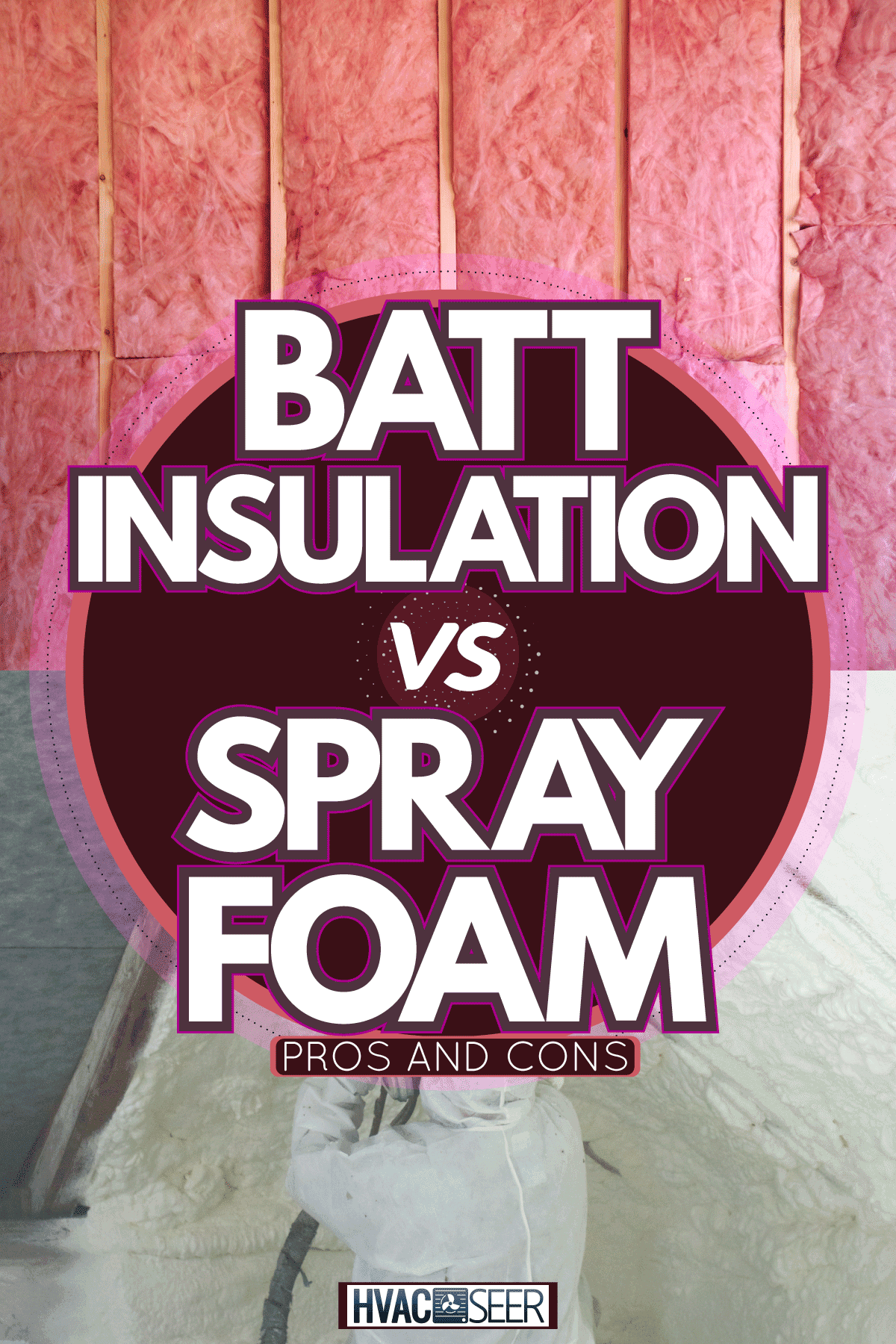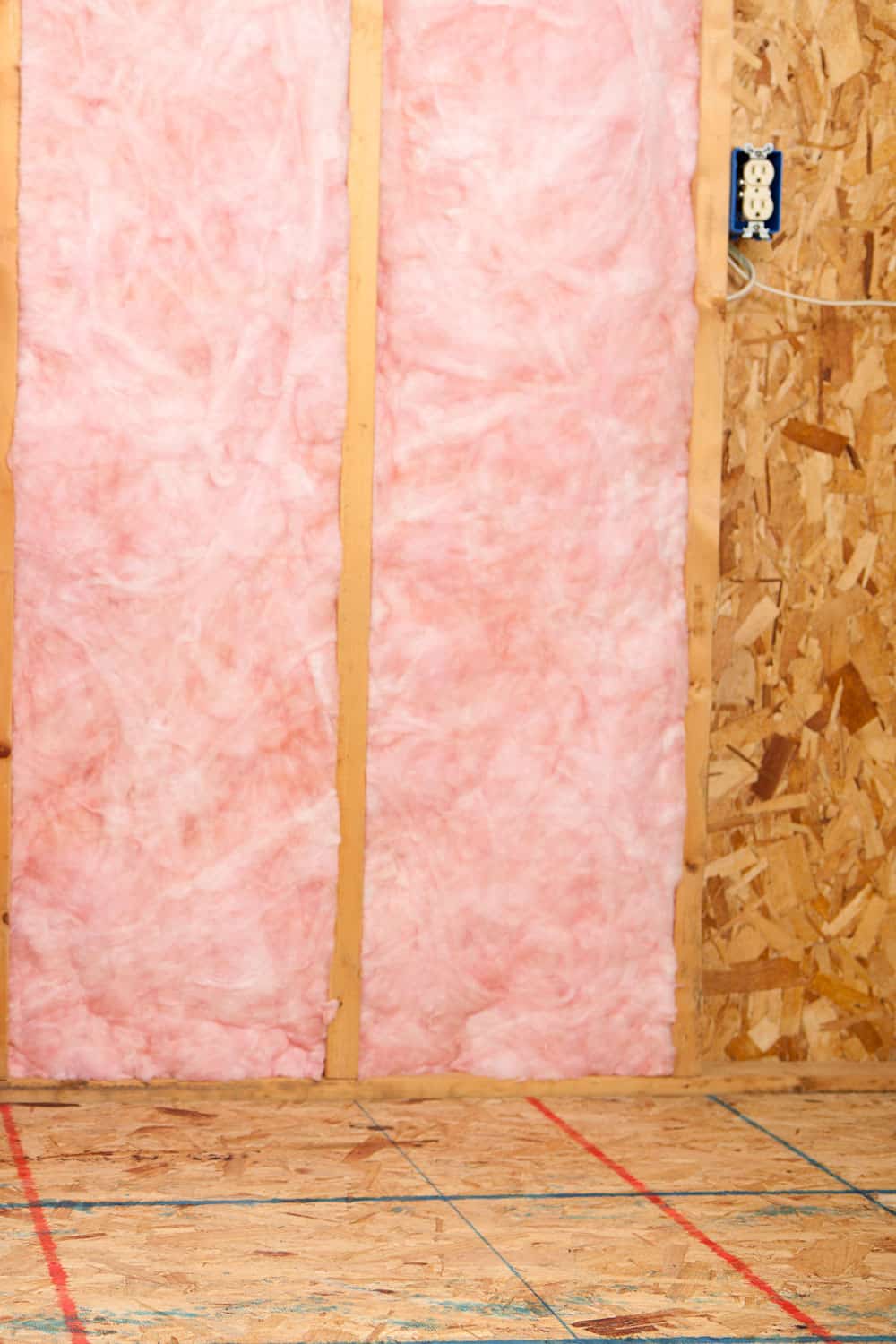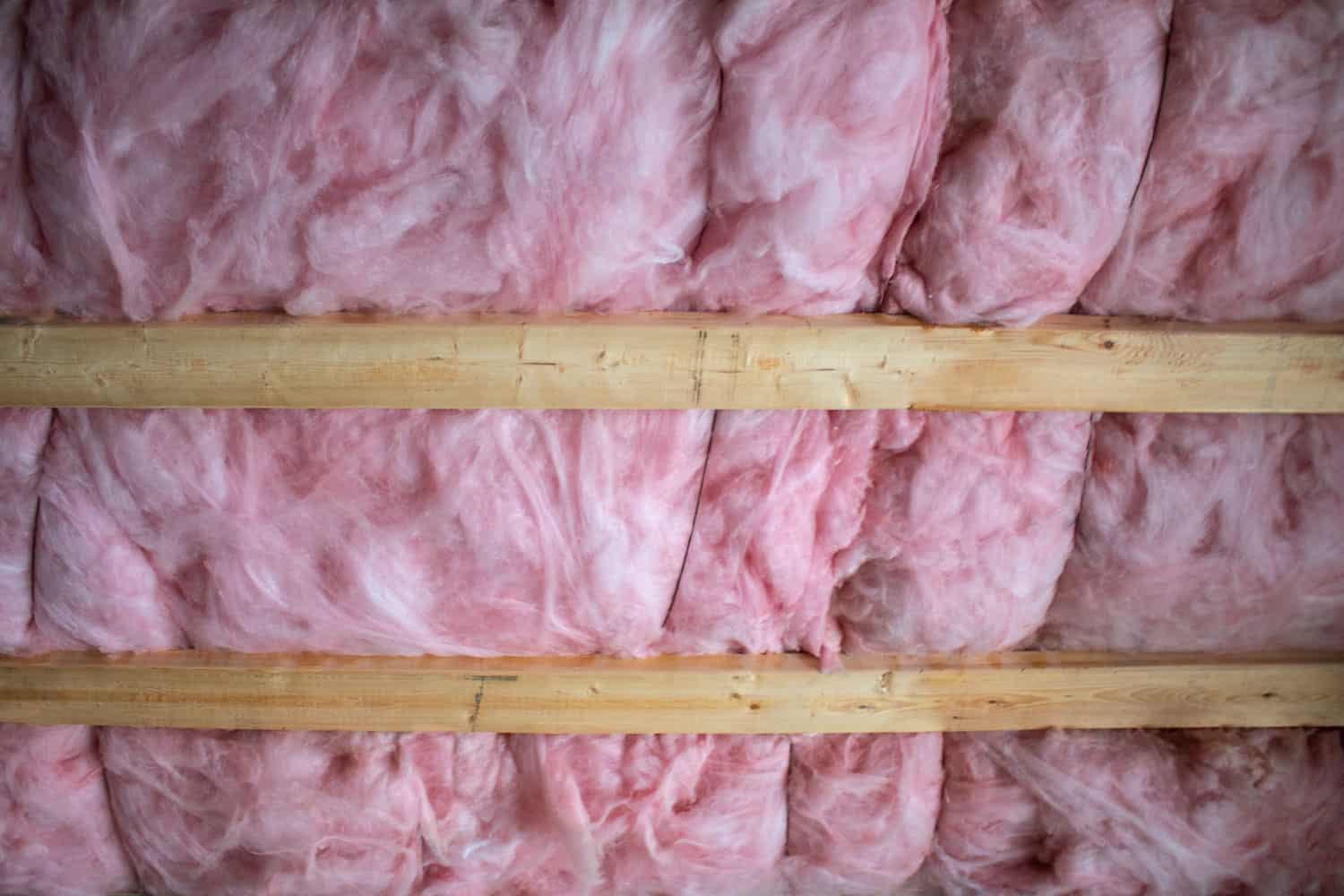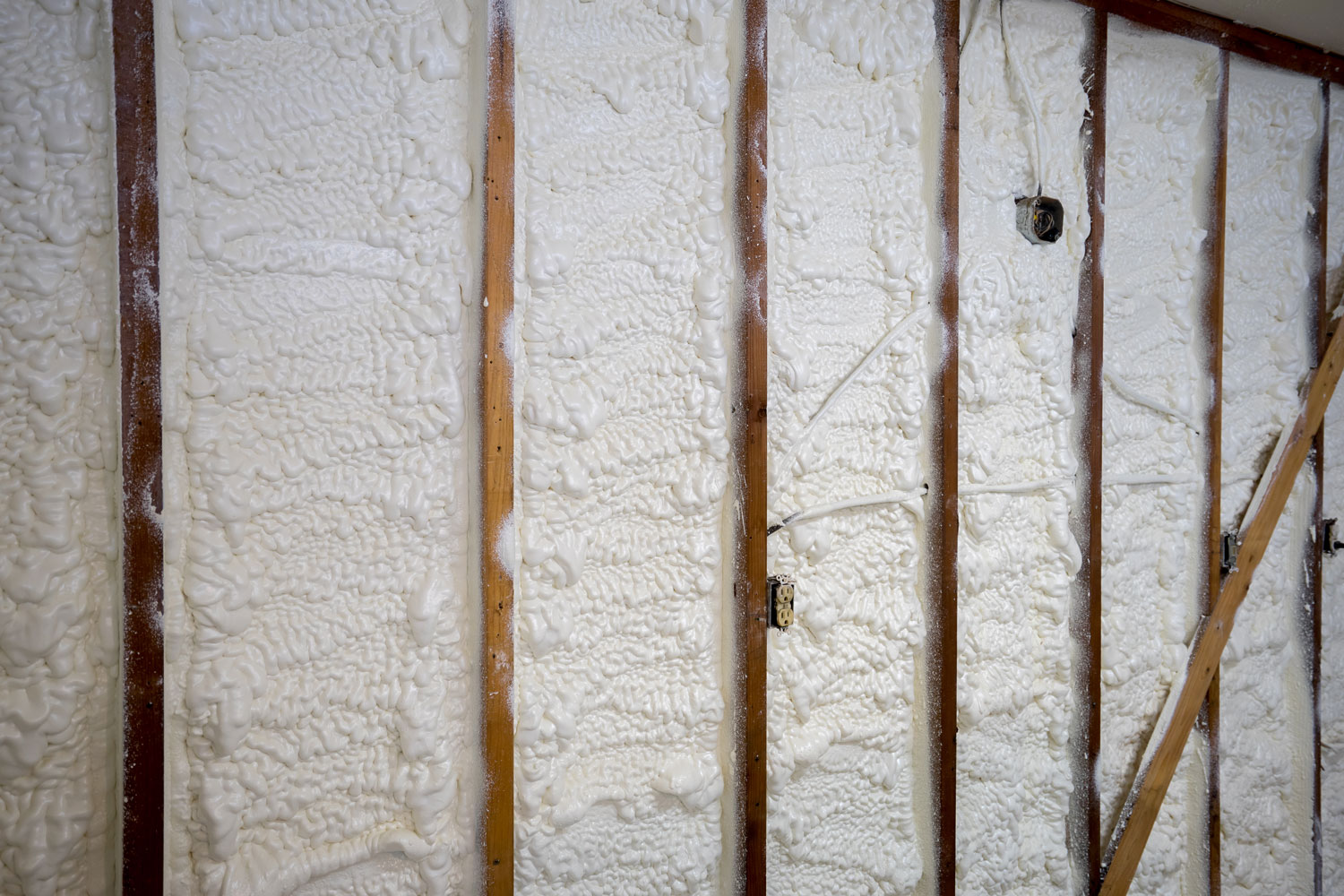Are you planning to start an insulation project and trying to determine which would be the best insulation material to use? Wonder no more, for we have researched this question to get the answer for you.
Here is a summary of the pros and cons of both:
- Batt insulation
- Pros
- Cheap and easy to install
- Optional facing acts as a vapor barrier
- Cons
- Can irritate eyes, skin, and lungs, which can lead to lung-health issues
- Performance can suffer as a result of poor installation techniques
- Does not prevent heat conduction through structural elements
- Pros
- Spray foam
- Pros
- The highest density of all the available insulation materials
- Closed-cell foam eliminates the need for a separate vapor barrier
- Cons
- Installation produces toxic gases
- Can easily make a mess, leaking through unsealed joints and openings
- Requires specialized subcontractor with specialized training, equipment, and experience
- Far more expensive than other insulation materials
- Pros
Batt insulation and spray foam are blanket terms that refer to various insulation materials that fall under each. Each of these insulation materials has specific pros and cons that we will discuss in detail in the succeeding sections. Read on!

What are the advantages and disadvantages of batt insulation?
Here are the different types of batt insulation and the advantages and disadvantages of each type.
Fiberglass batt

Fiberglass is the most popular type of insulation in the US today. It is effective and inexpensive insulation, and it doesn’t burn. Some are made from recycled glass to reduce their ecological footprint.
It is sold in medium and high-density options. Insects do not munch on fiberglass batt, and it does not shrink.
Unfortunately, protective gear must be worn when you work with fiberglass batt insulation. The small slivers can get lodged into the skin and they are small enough to be inhaled.
Some fiberglass batts use formaldehyde as a binder that can leak into the air. Fiberglass batts require a vapor barrier to protect it from moisture although there are plastic-sealed versions available.
The 24 by 48 Owens Corning 512 sq ft unfaced fiberglass batt, 8-bag pack, is available on Amazon. Check it through this link.
Mineral wool batt
Mineral wool batts are made from fibers from natural stone like basalt and are naturally hydrophobic. This means that they are moisture-resistant. Additionally, it retains its insulating properties even when it is wet.
Mineral wool is sound-absorbent. It also cannot be burned by temperatures below 1,800 degrees Fahrenheit. Because of this, it can serve as a fire barrier, slowing down the spread of fire.
On the other hand, protective gear must be worn when working with mineral wool. The tiny slivers from mineral wool (like in fiberglass batts) can get lodged in the skin, and they are small enough to be inhaled and cause lung disease.
Mineral wool insulation is available on Amazon. Check it through this link.
Plastic fiber batt
Plastic fiber batt insulation is made from recycled PET bottles. The fibers are formed into batt insulation, similar to the way fiberglass batt is made.
The fibers are treated with a chemical to prevent them from burning. However, it can still melt when exposed to heat.
Plastic fiber batts have relatively high R-values and are not irritating to work with. Unfortunately, it is difficult to cut using standard cutting tools. Additionally, it is not yet available in many places in the US.
Natural fiber batt

Natural fiber insulation includes many different materials that are compressed and prepared like fiberglass batt. The common attribute of these materials is that they are made from natural materials.
What are the advantages and disadvantages of sheep’s wool batt insulation?
- Some sheep’s wool insulation is manufactured with 100% sheep’s wool, while some are mixed with recycled polyester in a 75-25 mix ratio.
- Wool can last for decades, and it can simply be composted at the end of its life.
- Manufacturing wool batts need only a small fraction of the energy used to manufacture fiberglass batts.
- It is breathable and can constantly absorb and release moisture. It can absorb up to 30% of its weight in moisture before its thermal properties start to get affected.
- The inner core of wool fiber absorbs water to help protect surrounding timbers from moisture and prevent mold growth. When wool absorbs water, it gets released into the atmosphere as heat, raising the temperature of the surrounding area.
- Sheep’s wool is a fire retardant because the atmosphere does not have enough oxygen to support the combustion of wool.
Its primary disadvantage is that it has a low R-value. Additionally, wool is vulnerable to insects—especially moths. Moreover, wool insulation batts are also more expensive than fiberglass batts.
What are the advantages and disadvantages of recycled textile insulation?
- Recycled denim makes up 85% of cotton insulation batts, while the rest is polyester. They are pressed into large mats and treated with borate to make them insect and flame resistant. The mats are then cut into sizes that fit into wall and floor cavities.
- There is no need for protection when installing cotton batts because it doesn’t release any irritants. It is made from recycled materials, and it can be recycled again post use.
However, cotton batt is expensive and harder to cut because of its dense mass. It is less malleable than fiberglass insulation. Cotton batts are also difficult to find. If you do find cotton batt insulation, it can either be in limited supply or needs to be ordered and bought in large quantities.
What are the advantages and disadvantages of cork insulation?
- Cork insulation is 100% natural. Cork is heated, forcing it to expand and release its resin that binds pieces of cork together. There is no chemical used to create cork batts.
- Moreover, it is also a great acoustic and thermal insulator. It can protect cavities against moisture and molds.
- Cork is also fireproof and unattractive to mice and termites. When you combine cork’s natural sound-dampening property and aesthetics, it can be installed on the façade facing the street to deaden the noise from outside.
The biggest drawback of cork insulation is the price. It gets even higher when the cost of installation is added, the price of which is also higher than the cost to install the other batt insulation materials.
Spray foam insulation
There are two primary types of spray foam insulation—light density open-cell spray foam and medium density closed cell spray foam.
Here are the advantages and disadvantages of these two types.
Open-cell spray foam
What are the advantages of open-cell spray foam?
Also called a half-pound foam or open-cell foam, open-cell spray foam expands after spraying to fill gaps, cracks, and crevices.
- When it expands, it creates small, open cells that are filled with carbon dioxide. It serves as thermal and acoustic barriers in homes.
- It can expand a lot to cover all the surrounding spaces where it is sprayed including gaps, holes, and cracks.
What are the disadvantages of open-cell spray foam?
- According to Why Spray Foam, low-density open-cell spray foam has an R-value that starts at 3.6 per inch. This is ok for moderate climates, but it is not enough for colder climates.
- Additionally, it can shrink over time, exposing areas that should have been insulated.
- Another disadvantage is that it is difficult to apply, even by professional installers, because it dries too quickly. Installers can sometimes have several layers of open-cell spray foam bundled on top of each other, preventing further installation on covered areas.
- It is also expensive compared to all of the batt insulation materials.
Closed-cell spray foam
What are the advantages of closed-cell spray foam?
- Closed-cell spray foam can serve as both insulation and air barrier. It can be sprayed into open cavities and never settle over time.
- According to Southland Insulators, it has a high R-value—5 to 7 per inch—allowing it to provide better insulation levels even with small cavities. Additionally, it creates an impenetrable air-tight seal once it dries and settles.
- Moreover, closed-cell spray foam is impermeable to water. Impermeability to water makes it a deterrent for mold, mildew, and bacterial growth.
- It is made from an inert polymer that makes it an unsuitable food for bacteria. It has the fewest issues with pest infestations when compared to all the other insulation materials available in the market today.
- Closed-cell insulation has an indefinite lifespan after insulation. There's no need for regular upgrades or replacements.
- As long as the installation is done properly, there is no need to re-insulate. Because it remains in top shape for decades, it doesn’t lose its R-value.
- Creating an airtight seal inside your home helps you keep contaminants outside.
What are the disadvantages of closed-cell spray foam?
- On the negative side, it doesn’t always fill the smallest cavities. In some situations, closed-cell spray foam exacerbates water damage for homeowners because the unfilled cavities can get filled with water.
- Closed-cell spray foam has lower breathability compared to its cousin—open-cell spray foam.
- Another big disadvantage is that it requires a lot of experience and special equipment to correctly install. This can make the installation cost even higher which adds to the high cost of the product.
- Closed-cell spray foam takes time to cure, and it excretes gas while curing that is known to trigger issues of blurred vision and respiratory distress. If there is a mistake in the mixing of the correct proportion of the ingredients, the foam has a risk to emit the gas permanently even after it is cured.
Conclusion

Batt insulation and spray foam insulation have their own advantages and disadvantages. The advantages of batt insulation center on cost and ease of installation, while the advantages of spray foam are focused on a high R-value per inch of thickness.
The disadvantage of batt insulation, on the other hand, lies in its lower R-value per inch, while spray foam insulation’s disadvantages revolve around cost.
If you enjoyed this article, check these two articles too:




